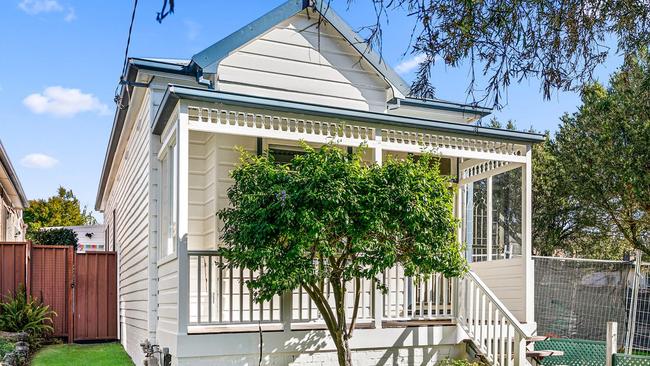NSW real estate: housing affordability drops to worst level ever
Homeownership in NSW has hit a historic milestone, with the average household only able to afford a truly shocking number of the state’s homes.
Property
Don't miss out on the headlines from Property. Followed categories will be added to My News.
It’s official: the great Australian dream of owning a home is now harder to achieve than at any time in the last four decades.
Alarming findings from PropTrack’s Housing Affordability Index launched this week showed affordability has plunged to its worst levels on multiple metrics.
The Index showed a household earning the average NSW income of $139,000 a year could afford just 7 per cent of home sales in 2022-23 – the lowest share of properties since records began in 1995.
The proportion of homes considered affordable was also the lowest of any state or territory and close to a quarter the share of NSW homes considered affordable for average earners back in 2020.
Those earning at the 80th percentile ($202,000) – meaning they earned more than 80 per cent of households – could only afford a third of the homes in 2022-23, down from 75 per cent of the home sales in 2010.
And low income workers were blown out of the market altogether, with households earning at the 20th percentile effectively unable to afford any of the homes available in the recent financial year.
PropTrack further noted that the time it took the average buyer to scratch together a deposit – seven years – was higher than at any time over the 30 years preceding the 2020s.
The costs of paying off a home were also elevated, with mortgage repayments typically chewing up about 40 per cent of the average NSW household’s income – matching record highs in the late 1980s.
Property experts said the deterioration in affordability had been driven by a dramatic rise in mortgage rates, combined with stagnant wage growth and rising home prices in recent years.

PropTrack economist Angus Moore said the findings settled a longstanding debate among generations about who had an easier path to home ownership.
Mr Moore said saving for a deposit, buying a home and then paying it off were together harder now than in 1989-1990 when interest rates were at a record high of 17 per cent.
This was because higher prices meant households carried substantially more debt than they did three decades ago and smaller interest rate rises hit their budgets harder, he said.
“When you compare the late 1980s and now, the argument about who had worse repayments is really now just splitting hairs, but when you take the sum of all the other factors – how hard it is to get a deposit, how little housing is accessible on an average wage – today it is much, much harder,” Mr Moore said.
The PropTrack index revealed the best time to buy a home nationally was back in 1999/00 when a median household income could afford around half of all homes sold in that year.
Affordability also improved in the decade following the global financial crisis (GFC), and in 2020/21 when interest rates fell to record lows.
It comes as ABS lending data showed first-home buyer participation in the housing market has halved since 2021.
Mortgage Choice broker Michael Saliba said most first-home buyers who successfully got into the Sydney market had salaries well above $100,000 a year.
Mr Saliba, who services clients mostly in Sydney’s southwest, added that even in that region, one of Sydney’s cheapest, most couples buying their first home together were on a combined income of $300,000 a year.
“It’s their first home but they would be well past 30, even over 40 (years old),” he said.
Sev Evdokimov, who moved into his first home purchase last week, said getting into the market was a “struggle” because the choice of homes that were affordable were often too small.
“It wasn’t affordable. When we bought we had to take a gamble that our incomes would increase over time,” he said.
“I feel like one of the biggest obstacles is if you’re trying to buy after having kids because it’s harder (to get finance) … but then saving a deposit takes a long time.”
The PropTrack index measured affordability based on the share of homes households can afford to purchase across the whole income distribution, using data dating back to 1995.
It assumed the household already had a 20 per cent deposit and spent 25 per cent of their gross income on mortgage repayments. It also took into account the prevailing average mortgage rate (currently 5.94 per cent) plus a buffer rate.

The Index showed that affordability deteriorated in all households nationally, but was the worst for people in the 25-34-year-old age bracket, who could afford fewer than 30 per cent of all Aussie homes sold in 2022/23.
Finder home loans expert Richard Whitten said saving the deposit was the biggest hurdle for most first-home buyers.
“Wage growth over the past few decades simply hasn’t kept up with skyrocketing property prices,” Mr Whitten said.
“Saving up enough for a deposit, especially when the cost of everything from food, energy, and insurance — not to mention rent — is rising, is a big barrier to overcome. Buying a home is becoming increasingly out of reach for many Aussies.”
More Coverage
Originally published as NSW real estate: housing affordability drops to worst level ever




